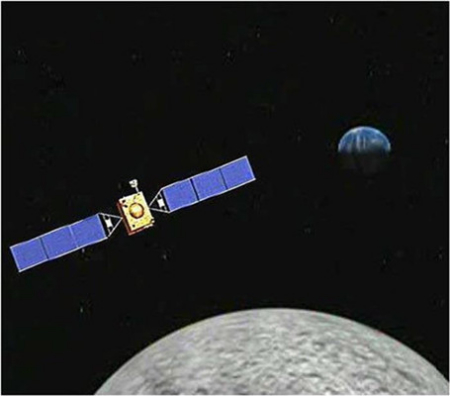
An artist's illustration of China's Queqiao relay satellite, which will relay data between controllers on Earth and China's Chang'e 4 lander-rover pair on the moon's far side. (Photo/China National Space Administration)
The relay satellite, launched Monday for China's Chang'e-4 lunar probe, is carrying the largest communication antenna ever used in deep space exploration, according to Chinese experts.
The launch of the satellite Queqiao, or Magpie Bridge, is a key step for China to realize its goal of sending the Chang'e-4 lunar probe to soft-land on the far side of the Moon.
Queqiao, developed by China Spacesat Co., Ltd. under the China Academy of Space Technology (CAST), will be the world's first communication satellite operating in an orbit around the L2 point of the Earth-Moon system to establish a communication link between controllers on Earth and the probe.
Chinese experts designed several antennas for the relay satellite, including one shaped like an umbrella with a diameter of 5 meters, which opened in space after the satellite separated from the carrier rocket.
It must endure temperatures as cold as 230 degrees centigrade below zero. Chinese experts conducted countless experiments during the development of the antenna, said Chen Lan, deputy chief engineer of the Xi'an Branch of CAST.
The satellite is of great scientific and engineering importance in the exploration of the universe, said Zhang Lihua, manager of the relay satellite project.
A reliable long-distance data transmission link is a key technological goal for space experts around the world.
A relay satellite is a type of communication satellite that provides data transmission, observation and control services for other spacecraft.
China has already sent a series of relay satellites into geosynchronous orbit at an altitude of 36,000 km for manned spacecraft.
Queqiao is similar to those relay satellites, but its orbit is more than 10 times farther, which is the main technological difficulty.


















































